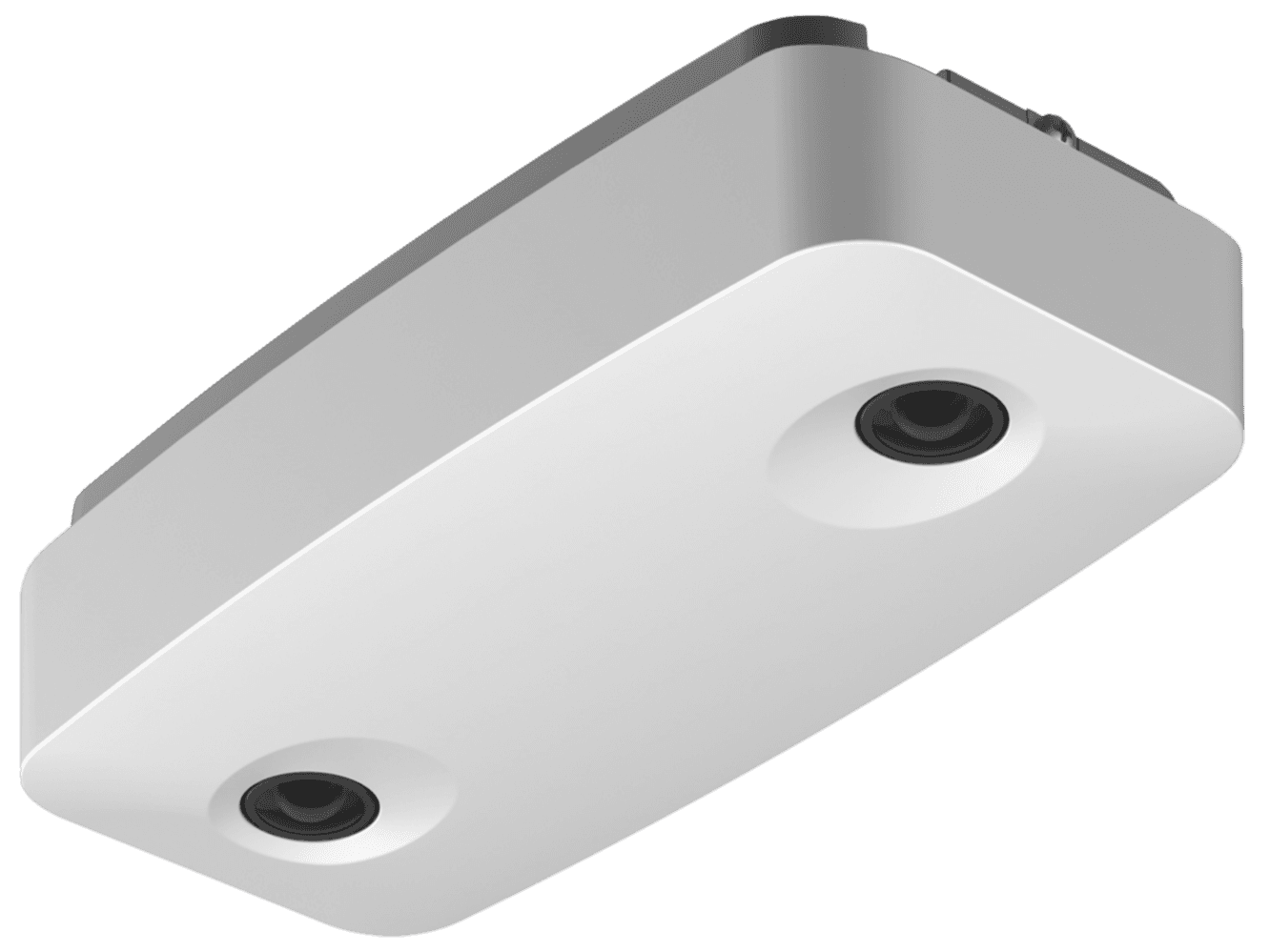Understanding How To Handle Employee Theft Effectively

On this page
- What The Numbers Tell Us
- Common Forms Of Retail Employee Theft
- 1. Stock theft
- 2. Data theft
- 3. Gift card theft
- 4. Sweethearting
- 5. Time theft
- How To Mitigate Employee Theft With Asset Protection Solutions
- Why Employees Steal And How To Counter It
- 1. Make sure your employees are happy
- 2. Keep employees motivated
- 3. Train staff and involve them in countering theft
- The Advantages Of Focusing On Rooting Out Employee Theft
The topic of employee theft is a sensitive one for most employers. From an individual’s point of view, you’re having to deal with a person or persons who have broken the trust you had in them and then gone on to adversely affect your business operations. From a business perspective, your organization has been targeted from within, resulting in losses not only to your bottom line but also to your morale.
The nature of and response to the incidents, then, can become emotionally charged and consequently subjectively dealt with. While you may dislike the notion of having difficult conversations and handling the matter according to protocol, more often than not it’s the best way to protect yourself and your operation. In fact, the recent NRF Protect conference brought emotional intelligence to the forefront as a central theme, highlighting an emerging trend in asset protection/loss prevention leadership. The resulting discussions suggested that examining and dealing with behavior, not just technical elements, is a far better approach.
What makes this topic all the more challenging is that employee theft of one kind or another is still on a steep rise. Prior to the Covid-19 pandemic, for example, a report by the Association of Certified Fraud Examiners found that the percentage of non-cash property theft nearly doubled from 2002 to 2018. Even more alarmingly, the same data also showed that the perpetrators were active at every organizational level, from the C-suite all the way down to the entry-level staff.
Nor does the trend end there. A surge in employee theft was predicted for when the pandemic tapered off as far back as 2020, and so far all signs point to this being accurate. It’s currently the perfect storm of financial difficulties, insecurities surrounding employment, and desperation leading to more easily rationalized behavior.

What The Numbers Tell Us
Incident for incident, the cost of internal theft remains much higher than that of loss due to shoplifting. The National Retail Federation’s 2021 Security Survey, for example, demonstrated this clearly. The average dollar loss per dishonest employee was over $1,500 in FY2020. By comparison, the average loss for a shoplifting incident was a mere $461, or less than a third of the amount for employee theft.
A similar NRF survey from a few years before also demonstrated that the combined losses in retail from factors such as employee theft, shoplifting, errors, and fraud amounted to 1.41% of all retail sales. The single biggest contributor was employee theft, amounting to 43.9% of total losses. To put that into perspective, employee theft cost the NRF-surveyed retailers more than $15 billion.
The Hays International 34th Annual Retail Theft Survey, a more focused report from 25 large retail chains, saw another trend. From 2020 to 2021, the average dollar value for cases involving dishonest employees rose by over 22%. Even more telling was that 68% of the surveyed retailers reported a marked increase in employee theft apprehensions over the same time period.
Clearly, the phenomenon of employee theft is prevalent and severe enough to warrant the attention of stakeholders from all tiers of retail. Strategists should ensure they include it in forecasts and planning, while asset protection and loss prevention teams need to find improved ways to tackle the issue head-on. Finally, the human element should not be ignored - theft stems from one or other motivation, and these can be identified and mended.
Common Forms Of Retail Employee Theft
Employee theft types differ from one retailer to another, depending on business model, security measures, staff motivation and a host of other factors. Most retailers of physical goods, however, can fall prey to the more common forms of theft.
1. Stock theft
Whether kept for personal use or sold to a third party, there are many incidents every year of employees helping themselves to store merchandise. In some cases, they act alone; in others, they have help from bogus customers or colleagues. What’s more, stock theft isn’t limited to retail outlets, either. There are abundant cases of stock theft from warehouses, distribution nodes and even manufacturing facilities. All of these end up hurting the retailer, however, directly or indirectly.
2. Data theft
According to the Varonis 2019 Global Data Risk Report, about 50 percent of the companies surveyed had over 1,000 sensitive files and 22 percent of all folders available to every employee. Oftentimes, internal data theft sees employees sell credit card numbers or contact lists to a third party. This not only damages your brand's reputation, it can also lead to lawsuits and hefty fines as privacy laws tighten up.
3. Gift card theft
Gift cards and prepaid credit cards are a dangerous proposition for retailers when it comes to theft, primarily because of how easy it often is to perpetrate theft through them. In most instances, employees will either issue gift cards without receiving payment for them, or ring up false refunds and load the refund amount to a gift card.
4. Sweethearting
This refers to instances where store staff fail to ring up the goods that a friend or partner is purchasing. It can also happen if cashiers apply their store discount for purchases made by other individuals, usually known to them or favored by them.
5. Time theft
Time is a valuable resource in any work environment. It is limited, and once gone it cannot be brought back. There are many ways for employees to “steal” time from their company, but it usually boils down to them being paid for time during which they are not being productive. This can be very easy to take advantage of, and it can be a costly company exercise for both HR and payroll to encounter.

How To Mitigate Employee Theft With Asset Protection Solutions
There are a number of ways to prevent employee theft altogether, such as background checks, positive motivation and staff training. For cases where it nonetheless happens, however, retailers do have methods of detecting and reducing theft.
Implementing tighter stock controls via EAS or RFID technologies
Pairing high-res video feeds with advanced analytics, such as the RetailNext Asset Protection solution, to allow for faster detection and investigation of incidents
Using modern Point Of Sale systems to make it easier to find and analyze discrepancies, and closely monitoring any POS systems with high mobility
Have trustworthy personnel dedicated to asset protection, loss prevention, and incident investigation

Why Employees Steal And How To Counter It
Employees, irrespective of their role, are still people, and people find different motivations for stealing from their employers. It’s always worth bearing in mind that stealing is typically a conscious, willful act. Therefore, you should treat any such intent or actions with a parallel response, in accordance with your organization’s policies and regional laws.
Employees commit theft for a variety of reasons, whether they’re simply disgruntled, or feel that something is owed to them, or are in dire financial straits, among others. More often than not, however, the situation arises due to motive, rather than opportunity. To that end, there are several ways to stop people from wanting to steal altogether.
1. Make sure your employees are happy
In our recent blog post titled, How To Protect Store Staff From The Fallout Of Retail Crime, we explored how employee happiness directly affects their productivity and by how much. This may sound like an additional responsibility but bear in mind that research suggests that happier employees are not only more productive, they’re also far less likely to steal from you. While the retail industry has not always been at the forefront of championing employee happiness, that’s busy changing, as employers realize the benefits of a happy working environment.
2. Keep employees motivated
People who enjoy a sense of belonging and who know how they are contributing to success are a lot less likely to act against that success. This is where company culture plays such a critical role. Each employee should understand how their work makes the company perform better, and they should feel as though they’re a vital part of that bigger entity. Job satisfaction is also a key element in staff retention, and results in people who are eager to excel and help a company rise.
3. Train staff and involve them in countering theft
We mentioned this briefly before, and it’s worth expanding on. Whether from accidental loss or outright theft, prevention works best when it’s a team effort carried out by as many people as possible. To achieve this, you should make a point of delivering theft policy and countermeasure training to all your staff. Furthermore, instill in them a sense of shared responsibility for making sure theft is kept to a minimum. You can do this by pointing out the benefits of lowering the cost of related incidents, and encouraging them to act as a group.
The Advantages Of Focusing On Rooting Out Employee Theft
Each employer manages theft in their own way and with their own processes. The advantage of doing so seems obvious - you minimize associated losses of money, stock, services or time. Many employers, however, are not always aware of the additional benefits that come from making sure their employees cannot and do not steal.
Boosted morale - knowing that they work for a company where honesty and integrity are high is a winner for staff morale
Preferred employer status - while it might seem an odd item to mention when recruiting, it’s still a feather in the company cap, and worth sharing
Lower insurance rates - investing resources towards minimizing theft overall means fewer insurance claims and lower premiums
More robust processes and protocols - investing time towards tackling the issue means you’re also helping to future-proof your organization against further incidents.
About the author:

Chris Hadjiyannis, Product Marketing Coordinator, RetailNext



